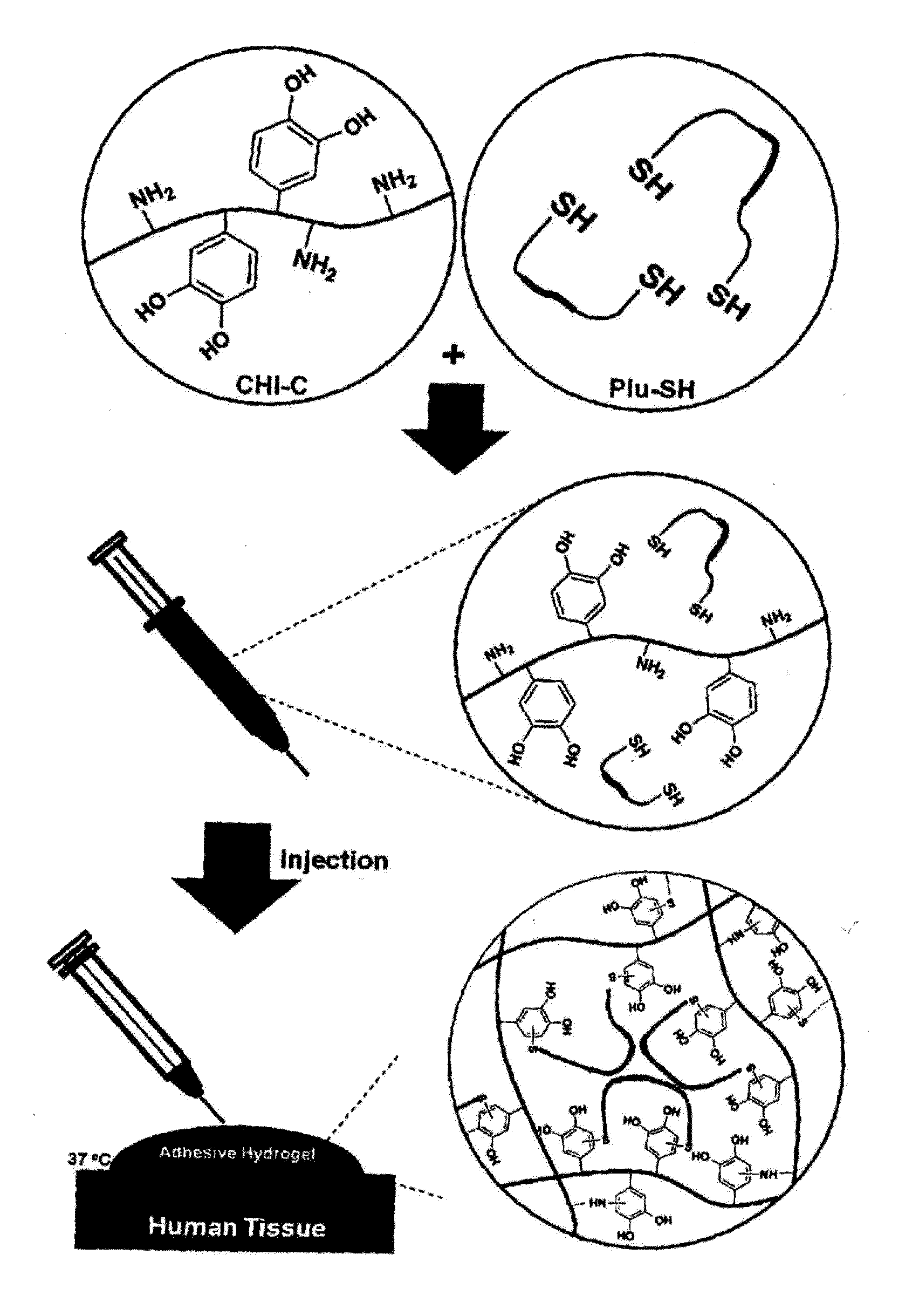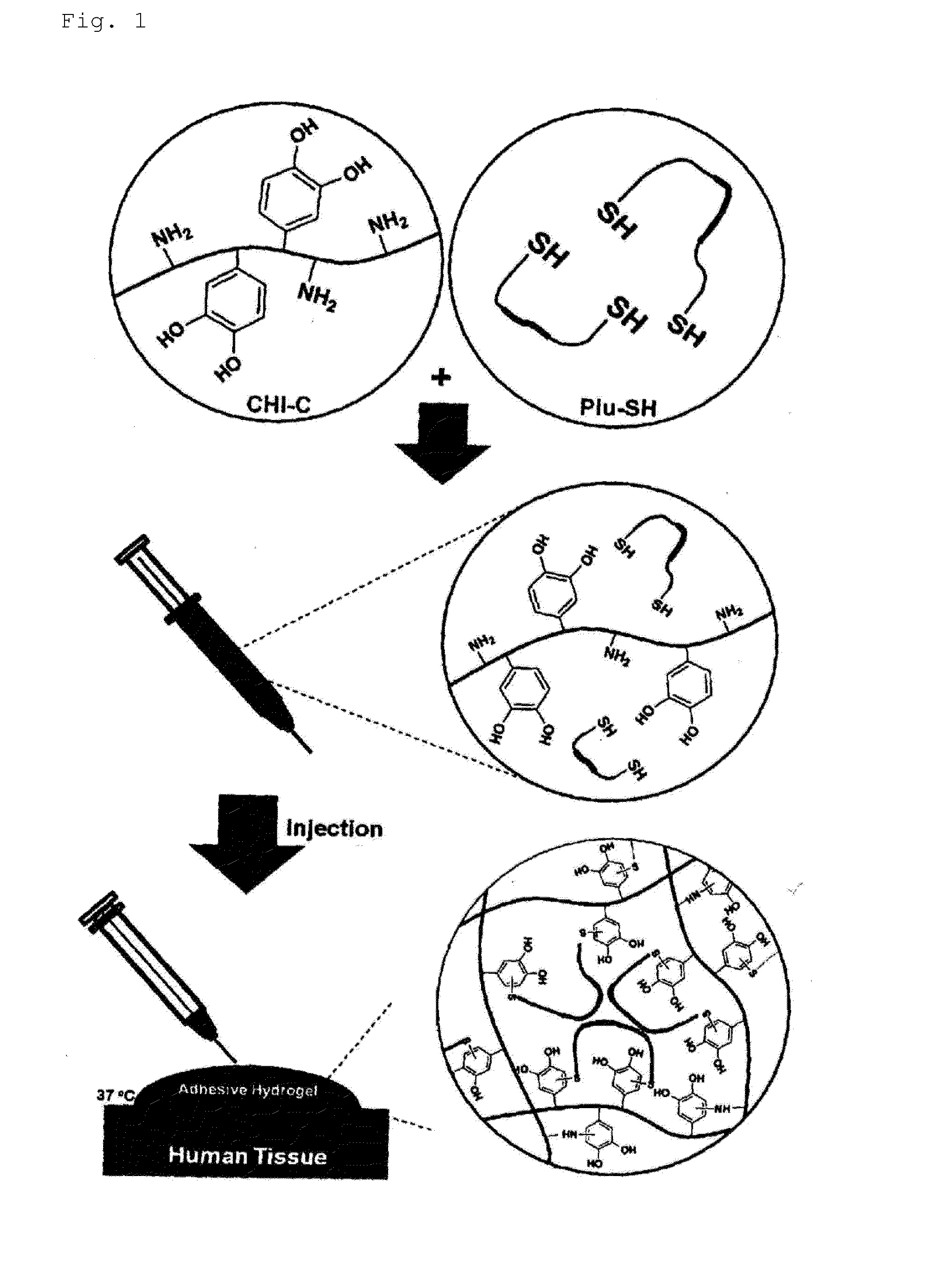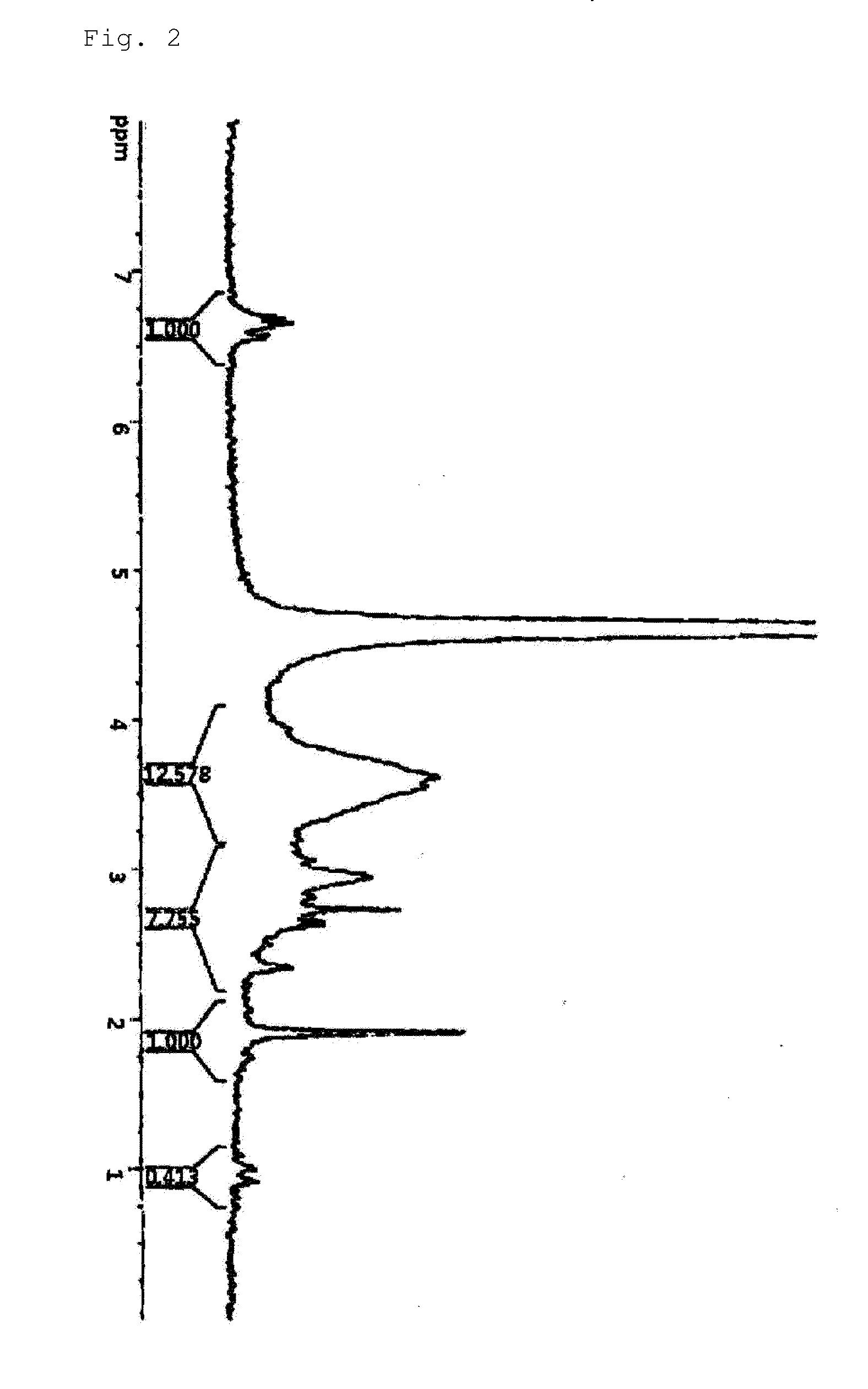Hydrogel comprising catechol group-coupled chitosan or polyamine and poloxamer comprising thiol group coupled to end thereof, preparation method thereof, and hemostat using same
a hydrogel and catechol group technology, applied in the field of adhesive hydrogel composition, can solve the problems of harmful substances in synthetic organic adhesives, strong tensile strength of conventional surgical techniques such as suturing, patient pain, etc., and achieve the effect of excellent hemostatic effect and easy application
- Summary
- Abstract
- Description
- Claims
- Application Information
AI Technical Summary
Benefits of technology
Problems solved by technology
Method used
Image
Examples
preparation example 1
Preparation of Catechol Group-Coupled Chitosan
[0084]0.5 g of chitosan (Chitosan 300) was dissolved in 50 ml of 0.1M HCl solution to make a chitosan solution that could be maintained at a pH of 5 using 1M NaOH. 591.0 mg of hydrocaffeic acid (3,4-dihydroxy hydrocinnamic acid, Sigma-Aldrich) and 1244.9 mg of EDC (1-ethyl-3-(3-dimethylaminopropyl)-carbodiimide hydrochloride, Sigma-Aldrich) were dissolved in 25 ml of triple distilled water and added slowly to the chitosan solution. The mixture was allowed to react at room temperature for 12 hours while it maintained at a pH of 5.5 or less. The reaction product was dialyzed through a dialysis membrane (MWCO: 12,000-14,000, SpectraPor) at a pH of 5 for 2 days, and then dialyzed in triple distilled water for 4 hours. The dialyzed material was freeze-dried and then stored in a moisture-free desiccator. The content of catechol coupled to the chitosan was analyzed using nuclear magnetic resonance spectrometry and UV-Vis spectrometry. FIG. 2 sh...
preparation example 2
Preparation of Polaxamer Having Thiol Group Coupled to End Thereof
[0085]10 g of Pluronic (Pluronic F-127) was dissolved in 70 ml of methylene chloride, and 221.2 μl of triethylamine was added thereto to prepare a Pluroinic solution. The prepared Pluronic solution was added slowly to 10 ml of a solution of 989.5 mg of p-nitrophenyl chloroformate in methylene chloride, and the mixture was stirred at room temperature for 24 hours, after which the volume of the solvent was reduced to 40 ml using an evaporator. The product was precipitated using dimethyl ether, and then dried under reduced pressure, thereby preparing activated Pluronic in the form of powder. 5 g of the activated Pluronic was dissolved in 20 ml of methylene chloride, and 423.4 mg of cysteamine was dissolved in 30 ml of a 1:1 (v / v) mixture of methylene chloride and ethanol, and the two solutions were mixed with each other and stirred at room temperature for 24 hours. After stirring, the product was precipitated using dimet...
example 1
Preparation of Hydrogel Comprising Catechol Group-Coupled Chitosan and Pluronic Having Thiol Group Coupled to End Thereof
[0087]0.1 g of the catechol group-coupled chitosan prepared in Preparation Example 1 was dissolved in 10 g of phosphate buffered saline (PBS, pH 7.4) to make a chitosan solution, and 2.4 g of the Pluronic having the thiol group coupled to the end thereof, prepared in Preparation Example 2, was dissolved in 10 g of phosphate buffered saline (PBS, pH 7.4) to make a Pluronic solution. 5 g of the chitosan solution and 5 g of the Pluronic solution were mixed to each other to prepare a hydrogel solution.
[0088]Gelation of the hydrogel solution was investigated using the vial tilting method known in the art at temperatures between 0° C. and 90° C. with intervals of 1° C. As a result, it was visually observed that a non-flowable hydrogel was prepared when the hydrogel solution was maintained at a temperature between 4° C. and 37° C. for 5 minutes.
PUM
| Property | Measurement | Unit |
|---|---|---|
| Temperature | aaaaa | aaaaa |
| Time | aaaaa | aaaaa |
| Percent by mass | aaaaa | aaaaa |
Abstract
Description
Claims
Application Information
 Login to View More
Login to View More - R&D
- Intellectual Property
- Life Sciences
- Materials
- Tech Scout
- Unparalleled Data Quality
- Higher Quality Content
- 60% Fewer Hallucinations
Browse by: Latest US Patents, China's latest patents, Technical Efficacy Thesaurus, Application Domain, Technology Topic, Popular Technical Reports.
© 2025 PatSnap. All rights reserved.Legal|Privacy policy|Modern Slavery Act Transparency Statement|Sitemap|About US| Contact US: help@patsnap.com



